
A draped garment is a garment that is made of a single piece of cloth that is draped around the body; drapes are not cut away or stitched as in a tailored garment. Drapes can be held to the body by means of knotting, pinning, fibulae, clasps, sashes, belts, tying drawstrings, or just plain friction and gravity alone. Many draped garments consist of only one single piece.

A skirt is the lower part of a dress or a separate outer garment that covers a person from the waist downwards. Originally made for both genders, it is currently made mainly for females.
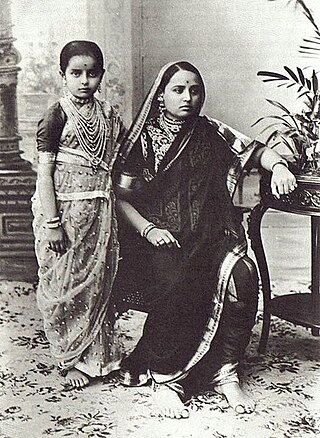
A sari is a women's garment from the Indian subcontinent. It consists of an un-stitched stretch of woven fabric arranged over the body as a robe, with one end attached to the waist, while the other end rests over one shoulder as a stole (shawl), sometimes baring a part of the midriff. It may vary from 4.1 to 8.2 metres in length, and 60 to 120 centimetres in breadth, and is a form of ethnic wear in India, Sri Lanka, Nepal, Bangladesh, Pakistan. There are various names and styles of sari manufacture and draping, the most common being the Nivi style. The sari is worn with a fitted bodice also called a choli and a petticoat called ghagra, parkar, or ul-pavadai. It remains fashionable in the Indian subcontinent today.

A sarong or a sarung is a large tube or length of fabric, often wrapped around the waist, worn in Southeast Asia, South Asia, Western Asia, Northern Africa, East Africa, West Africa, and on many Pacific islands. The fabric often employs woven plaid or checkered patterns or may be brightly colored by means of batik or ikat dyeing. Many modern sarongs have printed designs, often depicting animals or plants. Different types of sarongs are worn in different places in the world, notably the lungi in the Indian subcontinent and the izaar in the Arabian Peninsula.
Clothing in India varies with the different ethnicities, geography, climate, and cultural traditions of the people of each region of India. Historically, clothing has evolved from simple garments like kaupina, langota, achkan, lungi, sari, to rituals and dance performances. In urban areas, western clothing is common and uniformly worn by people of all social levels. India also has a great diversity in terms of weaves, fibers, colors, and the material of clothing. Sometimes, color codes are followed in clothing based on the religion and ritual concerned. The clothing in India also encompasses a wide variety of Indian embroidery, prints, handwork, embellishments, and styles of wearing clothes. A wide mix of Indian traditional clothing and western styles can be seen in India.

A lavalava, sometime written as lava-lava, also known as an 'ie, short for 'ie lavalava, is an article of daily clothing traditionally worn by Polynesians and other Oceanic peoples. It consists of a single rectangular cloth worn similarly to a wraparound skirt or kilt. The term lavalava is both singular and plural in the Samoan language.

Tupenu is the Tongan term for a wrapped garment also called a sarong, lungi, or lava-lava, worn through much of South Asia, Southeast Asia, Arabian peninsula, the Horn of Africa and Oceania. It is analogous to the kilt worn in Scotland.
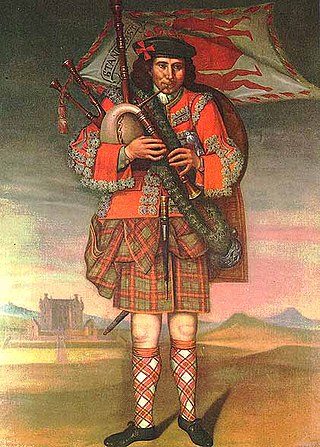
The belted plaid is a large blanket-like piece of fabric which is wrapped around the body with the material pleated or, more accurately, loosely gathered and secured at the waist by means of a belt. Typically, a portion of the belted plaid hangs down to about the knees or ankles with the rest of the material being wrapped up around the upper body in a variety of ways and pinned or otherwise secured to keep it in place.
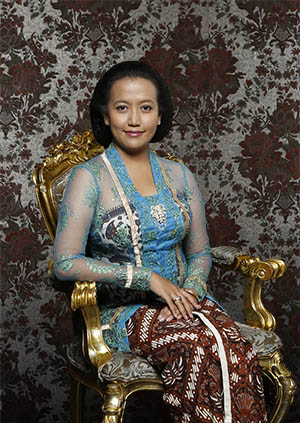
A kebaya is an upper garment traditionally worn by women in Southeast Asia, notably in Brunei, Indonesia, Malaysia, Singapore, and Southern Thailand. It is also worn in parts of southern Philippines and Cambodia.
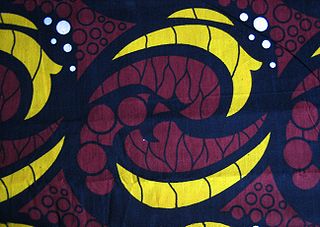
A kitenge or chitenge is an East African, West African and Central African piece of fabric similar to a sarong, often worn by women and wrapped around the chest or waist, over the head as a headscarf, or as a baby sling. Kitenges are made of colorful fabric that contains a variety of patterns and designs. In coastal areas of Kenya and in Tanzania, kitenges often have Swahili sayings written on them. There seems to be a confusion with the Kangas, which indeed carry texts in contrast with kitenges, which apparently typically do not carry texts.

The preservation of fabric fibers and leathers allows for insights into the attire of ancient societies. The clothing used in the ancient world reflects the technologies that these peoples mastered. In many cultures, clothing indicated the social status of various members of society.

Pakaian is the term for clothing in Malaysia's national language. It is referring to things to wear such as shirts, pants, shoes etc. Since Malaysia is a multicultural nation: Malay, Chinese, Indian and hundreds of other indigenous groups of Malay Peninsula and Borneo, each has its own traditional and religious articles of clothing all of which are gender-specific and may be adapted to local influences and conditions. Previously, traditional clothes were worn daily. However, by excluding Baju Melayu, Baju Kurung many are now only worn on special occasions such as marriage ceremonies and cultural events.

Outside Western cultures, men's clothing commonly includes skirts and skirt-like garments; however, in the Americas and much of Europe, skirts are usually seen as feminine clothing and socially stigmatized for men and boys to wear, despite having done so for centuries. While there are exceptions, most notably the cassock and the kilt, these are not really considered 'skirts' in the typical sense of fashion wear; rather they are worn as cultural and vocational garments. People have variously attempted to promote the fashionable wearing of skirts by men in Western culture and to do away with this gender distinction.
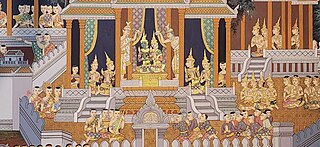
Khmer traditional clothing refers to the traditional styles of dress worn by the Khmer people throughout history. Tracing their origins back to the early Common Era, the customary styles of dress worn by Khmer people predate the indianization of Southeast Asia. The evolution of these clothing customs can be traced through archaeological artifacts from the 6th century to the post-Angkorian period, evolving from the simple pre-Angkorian Sampot to vibrant and intricately embroidered silk garments.
The Medieval period in England is usually classified as the time between the fall of the Roman Empire to the beginning of the Renaissance, roughly the years AD 410–1485. For various peoples living in England, the Anglo-Saxons, Anglo-Danes, Normans and Britons, clothing in the medieval era differed widely for men and women as well as for different classes in the social hierarchy. The general styles of Early medieval European dress were shared in England. In the later part of the period, men's clothing changed much more rapidly than women's styles. Clothes were very expensive and both the men and women of lower social classes continued also divided social classes by regulating the colors and styles these various ranks were permitted to wear. In the early Middle Ages, clothing was typically simple and, particularly in the case of lower-class peoples, served only basic utilitarian functions such as modesty and protection from the elements. As time went on the advent of more advanced textile techniques and increased international relations, clothing gradually got more and more intricate and elegant, even with those under the wealthy classes, up into the renaissance.

The clothing of the people in biblical times was made from wool, linen, animal skins, and perhaps silk. Most events in the Hebrew Bible and New Testament take place in ancient Israel, and thus most biblical clothing is ancient Hebrew clothing. They wore underwear and cloth skirts.

Traditional Thai clothing refers to the traditional styles of dress worn by the Thai people. It can be worn by men, women, and children. Traditional clothing for Thai women usually consists of a pha nung or a chong kraben, a blouse, and a sabai. Northern and northeastern women may wear a sin instead of a pha nung and a chong kraben with either a blouse or a suea pat. Chut thai for men includes a chong kraben or pants, a Raj pattern shirt, with optional knee-length white socks and a sabai. Chut thai for northern Thai men is composed of a sado, a white Manchu-styled jacket, and sometimes a khian hua. In formal occasions, people may choose to wear a so-called formal Thai national costume.

History of clothing in the Indian subcontinent can be traced to the Indus Valley civilization or earlier. Indians have mainly worn clothing made up of locally grown cotton. India was one of the first places where cotton was cultivated and used even as early as 2500 BCE during the Harappan era. The remnants of the ancient Indian clothing can be found in the figurines discovered from the sites near the Indus Valley civilisation, the rock-cut sculptures, the cave paintings, and human art forms found in temples and monuments. These scriptures view the figures of human wearing clothes which can be wrapped around the body. Taking the instances of the sari to that of turban and the dhoti, the traditional Indian wears were mostly tied around the body in various ways.
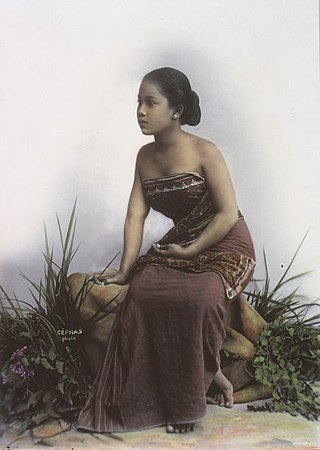
Kemben is an Indonesian female torso wrap historically common in Java, Bali, and other parts of the Indonesian archipelago. It is made by wrapping a piece of kain (clothes), either plain, batik printed, velvet, or any type of fabrics, covering the chest wrapped around the woman's torso.

















